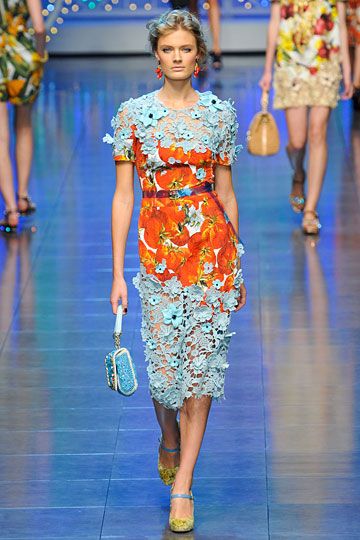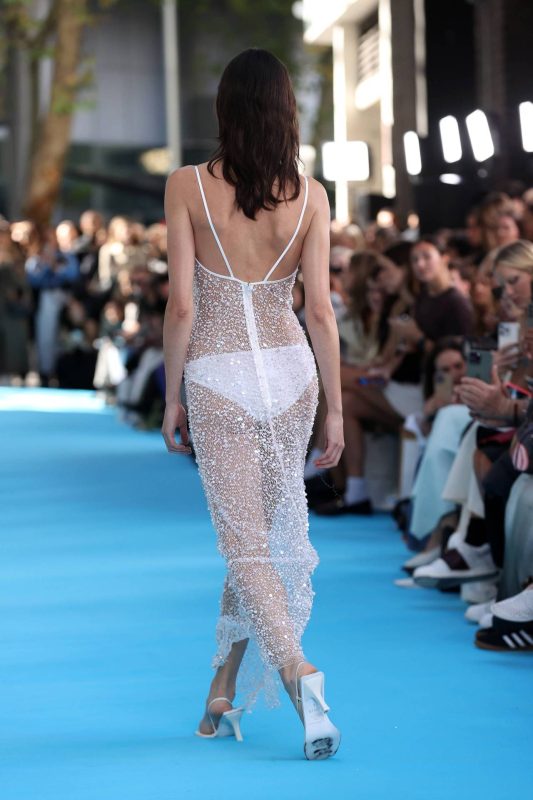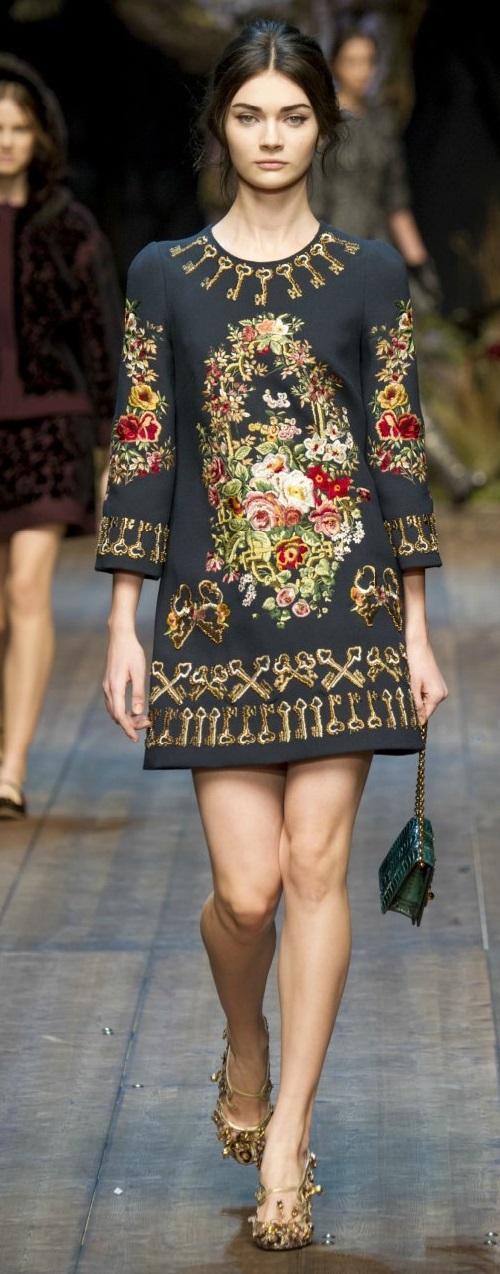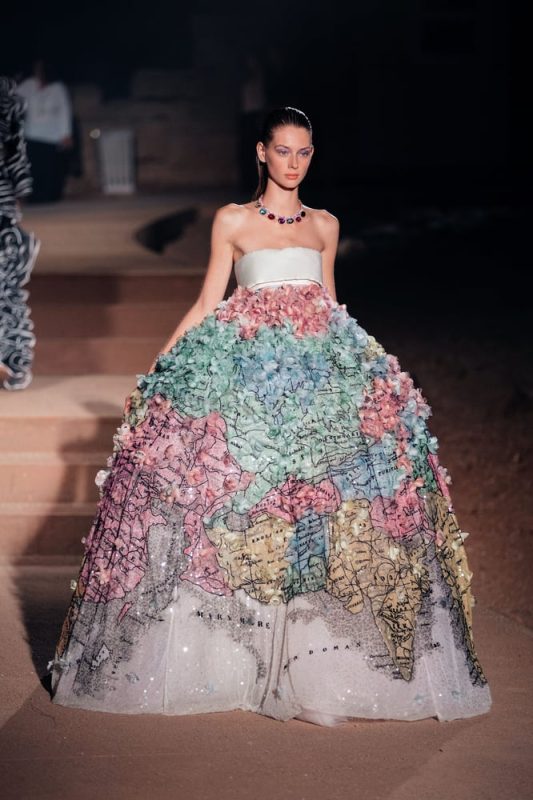Embroidery. From the intricate stitches of luxury designer apparel to the tiny details adorning everyday items. It’s a craft that reappears over centuries, never disappearing for too long.

Patterned embroidering on any plain cloth can change the entire meaning of it. Not only doe sit add to its overall beauty, but also gives the fabric a unique aesthetic. Embroidery is a versatile technique that adds depth and flair to garments, creating stunning coordination and texture.
It is, perhaps surprising to find this highly specialised skill flourishing in ready-to-wear.
The technique itself consists of a series of looping stitches, made by hand or machine. By choosing yarn of different colours and weights, intricate designs come to fruition – from delicate floral motifs to elaborate scenes filled with intricate detail.
Intricately Finished
History is witness to the success of embroidery. Anna Quan, for example, stuns on the ramp at Australian Fashion Week 2023 with a stunning example of embroidery.

The Sydney designer, celebrates a decade in the business this year. She closed her runway show with an embroidered, diaphanous slip dress that sent us swooning with its irresistible shimmer.
Dolce & Gabbana, Valentino, whisper-thin slips, and gowns were intricately finished with beading, While Marie Katranzou’s amphibious fabric reinvented embroidery with dazzling crystals. The embroidery of Dolce & Gabbana is done in Italy.

All these works are still mostly created by hand due to which designers are facing increasing difficulties in sourcing embroiderers. Some brands even have the resources to do embroidery. But there is a shortage of skilled labourers. Manufacturing ready-to-wear garments at realistic prices is also a different challenge.
According to a Financial Times article “The finished hand embroidery offers is something a machine cannot create,” says Katrantzou, who retains embroiderers in her London studio.

“Embroidery allows you to weave a bespoke story, with each piece unique. We want to make embroidery innovative, to change people’s perceptions of it.”
Her oceanic-themed collection featured sheer metallic mermaid dresses finished with coils of serpents and primordial sea creatures.
Fuelling Creative Inspiration
The French Atelier, Lesage, is probably the most famous embroidery workshop. First appearing in 1868, Chanel took it over in 2002. And today, apart from Chanel, it produces garments and ready-to-wear for several other fashion houses, including Schiaparelli, Bouchera Jarrar and Alexandre Vauthier.
As head of the embroidery house Lesage, Hubert Barre is fuelling the creative inspirations of the designers to make their imagination come true.
Rooted in the world of haute couture, continuing a long tradition of stunning craftsmanship of embroidery. Is responsible for many of the beadings and embroideries that adorn the famous Parisian couture collections.

In India, where embroidery appears as a hobby alongside business, labour costs are much lower than in Europe. Many brands including Dries Van Noten, Vilsenko and Aquazzura outsource production to India; famous for nurturing the art of handicraft.
Embroidering as a business has now come to an era where uniqueness is more important to consumers. It’s enlivening very simple and ordinary fabric by converting it into unique and attractive.
Subscribe to FIB’s Weekly Breaking News Report for your weekly dose of music, fashion and pop culture news!







